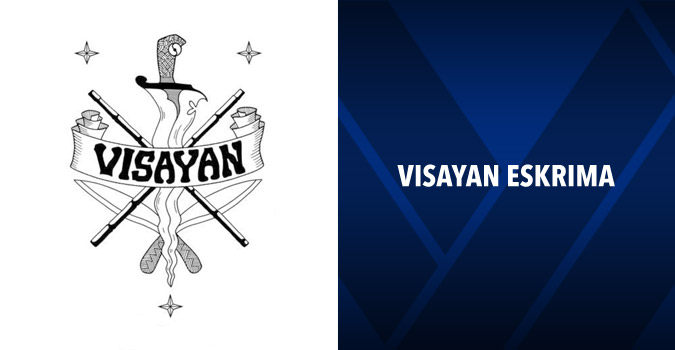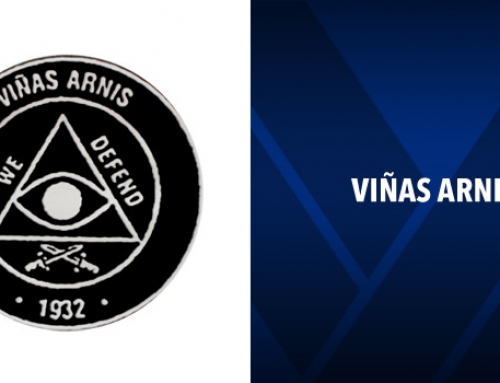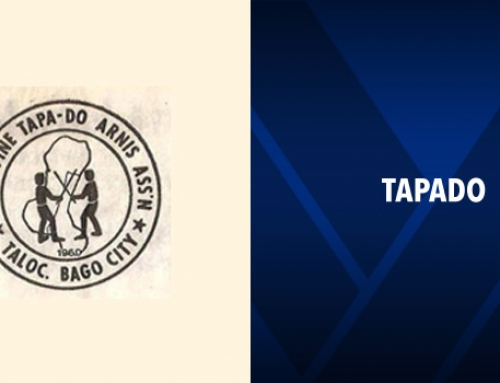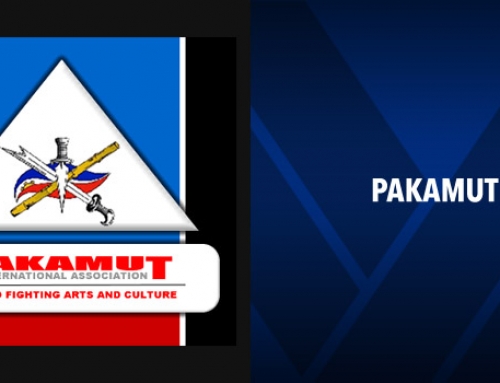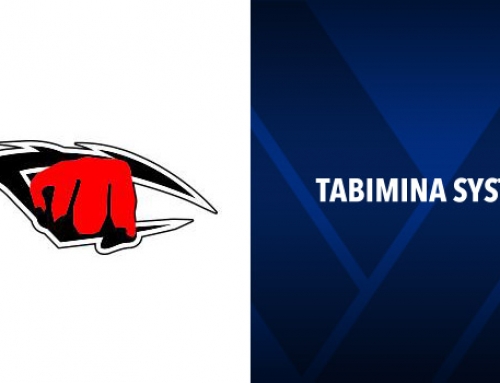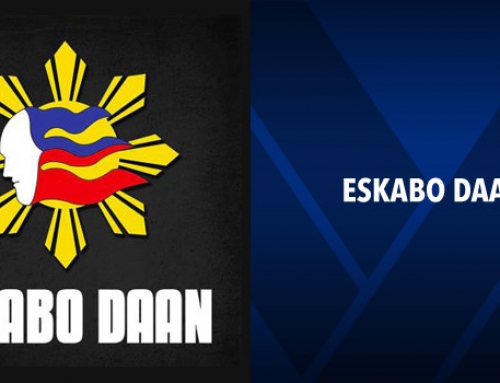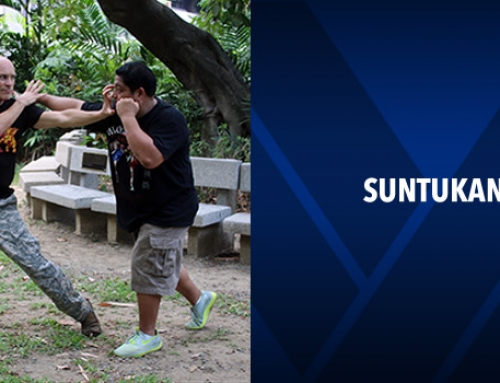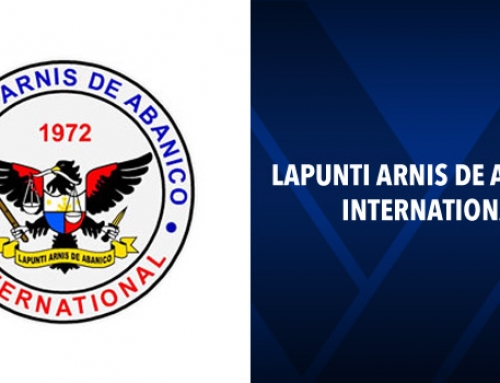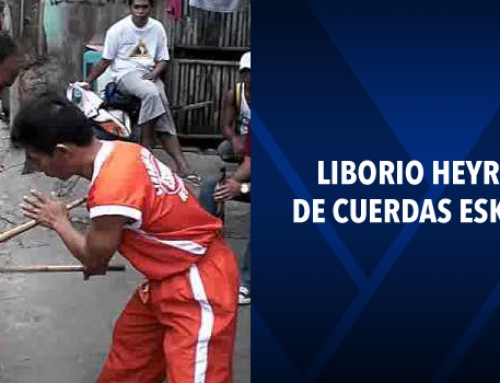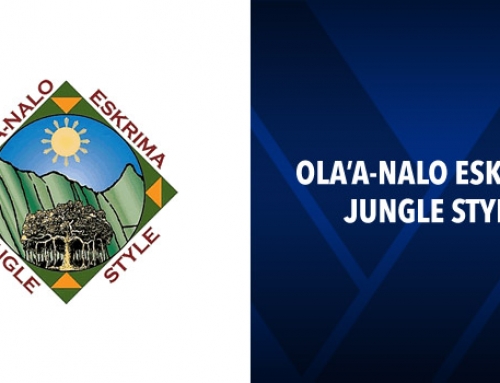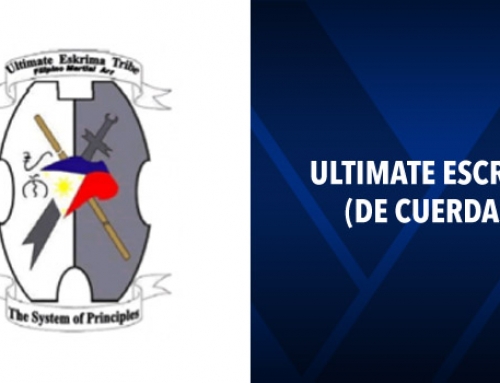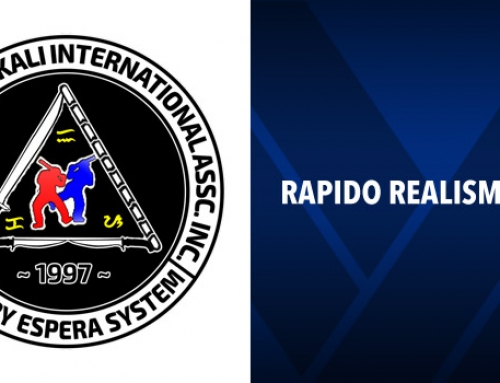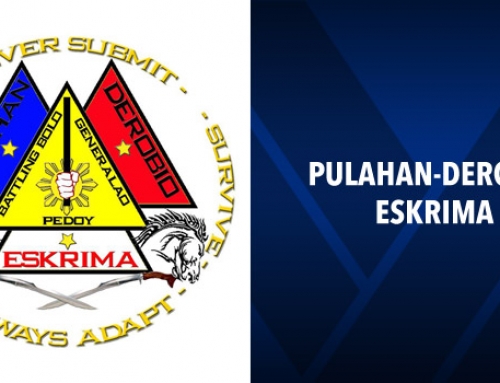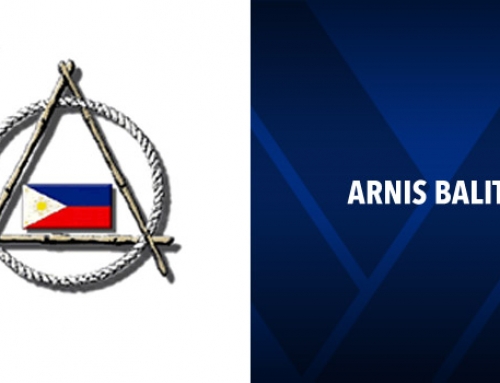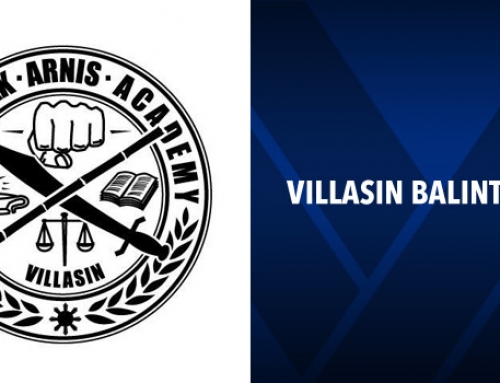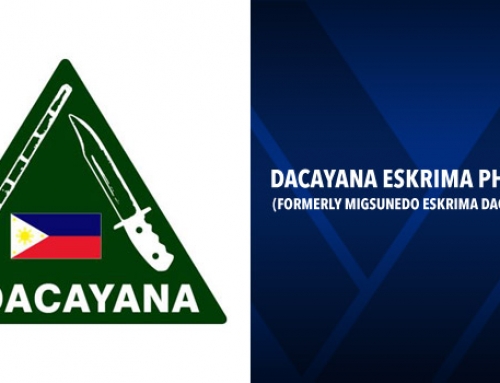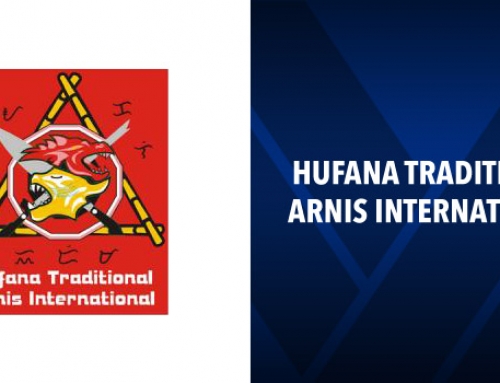Visayan refers to the central region of the Philippines, a group of islands including Cebu (Sonny’s home ). It also refers to the region, people and culture.
Most martial artists in the Visayan area use the name Eskrima to describe their weapons arts. Cebu is a hotbed of traditional Filipino martial arts, home to dozens of styles. The highly respected Doce Pares and Balintawak systems are but two of the most famous.
Corto Kadena means “short” and “continuous” or “flowing”. Corto refers to both economy of motion and close range. Strikes and blocks are compact, explosive and powerful.
This tight structure gives an opponent little warning about oncoming attacks and makes it easier for the student to protect themselves.
 Close range could refer to close quarter fighting or the use of a short weapon. It also means that one can transition between ranges as needed.
Close range could refer to close quarter fighting or the use of a short weapon. It also means that one can transition between ranges as needed.
Typically, close range combat is characterized by rapid multiple combination striking and the use of the left hand to “check” (control) the opponent.s weapon.
Training at this range teaches self control since the lightning fast stick or blade definitely creates fear in the opponent, aggressive tendencies must be controlled during practice to prevent injuries. Also consistent practice at this range reduces unnecessary fear as the defensive “wall” improves.
Kadena refers to a linked series of movements executed without stopping. A connected series of movements gives speed, power and continuity. This flowing chain of movement also refers to an enhanced mental state of uninterrupted attention to the here and now.
Flow gives the art a beautiful dance-like quality gratifying to the player and the spectator. Flow is a central concept of all traditional Filipino arts. Relaxation and mind-body unity are byproducts of the flow state.
“Larga Mano” refers to the long range fighting and to fighting with longer weapons (up to 36″ long) the term refers to the outer range of fighting, and to the styles of movement used in this range.
Long flowing, powerful movements are preferred. Evasion of incoming blows by footwork and body movement is critical to set up disarming strikes. Because of the power, momentum, and penetration of the Larga Mano strikes, traditional blocking is seldom used.
Simultaneous evasion and counter is a much safer tactic. Body unity is a key attribute honed by this practice; a high degree of footwork, body angulations, and weight shifting are developed as the entire body is used. The evasive defense created by the Larga Mano training makes for a very elusive target.
Sonny based his art on the blade. In his hometown, blades were the instrument of choice for self-defense and conflict resolution. Witnessing many real fights with blades as a boy, left a deep impression on him. Sonny felt that it was easier to go from blade to stick than from stick to blade. Of course, his art works with both.
The art of Eskrima includes the use of single and paired impact and blade weapons of all descriptions. Flexible and projectile weapons are also covered. Everyday tools and common items are also used as weapons when required.
Empty hand Eskrima includes punching, kicking grappling, throwing, and joint locking. Most parts of the body are used as weapons including elbow, knee, head butt, slapping, etc.
The hand-to-hand phase of the art can be used as defense after you are disarmed, or as a primary defense where a weapon is illegal or unavailable.
During his youth, Maestro Umpad was alarmed by the severe decline of Eskrima’s popularity. He feared the art could die out completely if steps weren’t taken to preserve it. He was deeply gratified by the 1980’s boom in Eskrima’s popularity in the US and worldwide.
Maestro Umpad’s lifelong mission was the propagation and teachings of his beloved Filipino martial culture. He carried out this task with his extraordinary teaching ability and his open and generous spirit.
He carried in him a vision of fraternity and unity among his fellow Filipino martial artists. A humble giant in ability, his loss was a great blow to all of us.
The Maestro left specific instructions to his students regarding the direction his art would take after his untimely death, and through all of us, the art will continue.
Even after leaving this world, Sonny felt that his art was more important than egos, stylistic differences, and personality conflicts.
He dreamed of a united community of martial artists working together to preserve the treasures we inherited form our grandfathers who taught us the art. He respected anyone who sincerely wanted to learn this incredible art.

